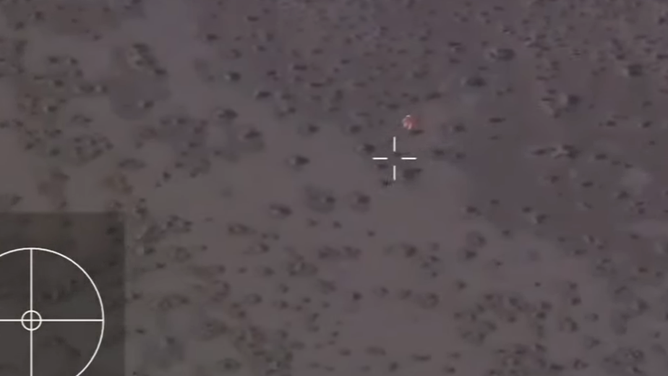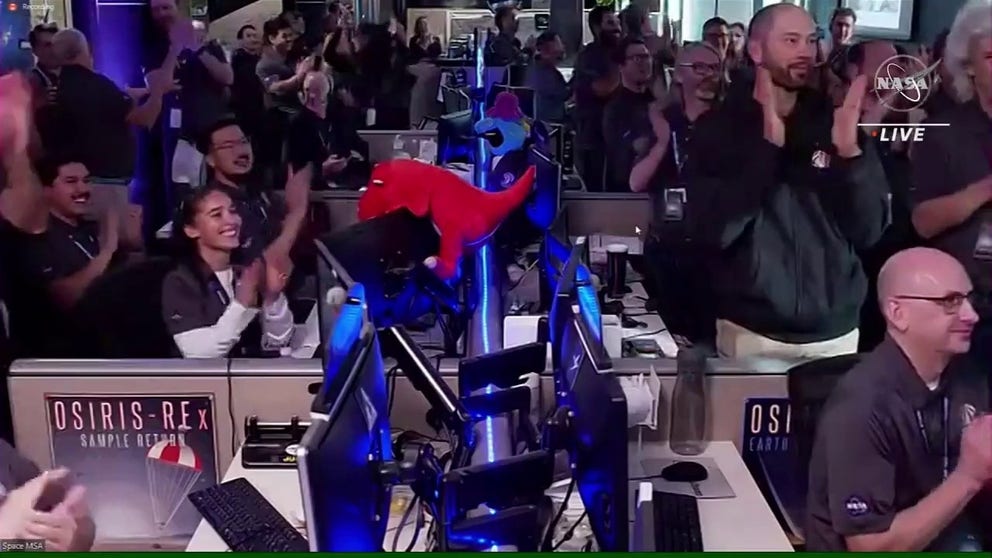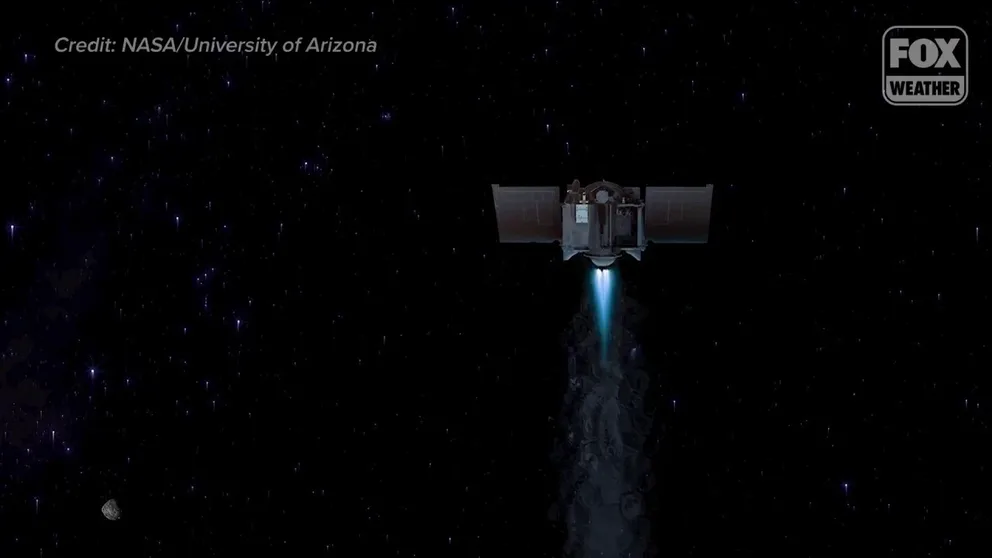'Touchdown': NASA's asteroid sample comes blasting down to Earth, landing in Utah
NASA's OSIRIS-REx successfully collected the asteroid Bennu sample in 2020. On Sunday, three years later, the sample landed in Utah, marking success for NASA's first asteroid sample mission.
'Precious cargo:' NASA's OSIRIS-REx gets picked up by a helicopter in Utah
The OSIRIS-REx asteroid sample hitches a ride on a helicopter after landing in the desert in Utah during Sunday.
NASA's tire-size space capsule carrying pieces of the asteroid Bennu came barreling through Earth's atmosphere at 27,000 mph from deep space and successfully plopped down in the desert in Utah during Sunday's planned landing.
The sample return marked a mission success for NASA's OSIRIS-REx spacecraft, which stands for Origins, Spectral Interpretation, Resource Identification, and Security–Regolith Explorer. On Sunday, the spacecraft released a capsule containing about 9 ounces of rocks, dust and dirt collected from the asteroid Bennu in 2020. About four hours later, the sample landed inside the Defense Department’s Utah Test and Training Range. The target landing zone was an area about the size of Rhode Island, about 80 miles from Salt Lake City.
On Sunday at 4:42 a.m. MDT, the spacecraft let go of the asteroid sample capsule while flying about 63,000 miles from Earth's surface. The capsule screamed through Earth’s atmosphere at 8:42 a.m. MDT.
Multiple tracking assets and aircraft followed the capsule after it separated from OSIRIS-REx.

The orange-and-white parachute of the asteroid sample capsule as seen via tracking cameras. (Image: NASA)
(NASA)
Ground telescopes tracked the spacecraft, and then an Air Force tracking station in Maui found the tiny object after the separation. Radar tracking antennas at the Utah Test and Training Range continued to monitor the capsule as it got closer to Earth. Infrared cameras picked up the capsule's hot trail, screaming through Earth's atmosphere.
A DoD high-altitude camera tracked the orange and white parachute carrying the capsule down to the desert in Utah. The parachute deployed early at about 20,000 feet, instead of the anticipated 5,000 feet above Earth, leading to an early touchdown time, according to NASA.
"Touchdown!" NASA mission commentators said as the capsule softly touched down at 8:52 a.m. Mountain Time.
NASA and Lockheed Martin teams jumped and cheered at mission control as the helicopter cameras showed the capsule and parachute safely resting on the ground. Lockheed Martin built the spacecraft-shaped capsule containing the sample.
The capsule release was scheduled for Sunday, regardless of the weather. The landing date was predetermined because late September is when Earth intersects with Bennu's orbit every year. Weather was still necessary for the sample recovery team. The meteorology team at the West Desert Test Center for U.S. Army Dugway Proving Ground in Utah has been providing forecasts to help NASA's team prepare for the landing and retrieval.
NASA said the only weather concern on Sunday was possible muddy conditions after recent rains in Utah. Helicopters transported the sample retrieval team to collect the sample to bring it back to a temporary clean room at the U.S. Army Dugway Proving Ground in Utah.
Mission success: NASA's OSIRIS-REx returns asteroid sample to Earth
NASA and Lockheed Martin teams celebrate after the sample from the asteroid Bennu landed in the desert of Utah on Sunday. The OSIRIS-REx spacecraft collected pieces from Bennu in 2020.
The recovery team was on the ground walking toward the asteroid sample within 22 minutes after the successful touchdown, wearing boots to combat the mud. Teams quickly confirmed the capsule had not been breached, hopefully leaving the untouched sample in pure form.
On Monday, the sample will be transported to NASA's Johnson Space Center in Houston. The space agency said more than 200 scientists worldwide will study the asteroid sample, including from Japan and Canada.
What’s next for NASA’s asteroid-exploring spacecraft?
NASA asteroid spacecraft gets a second mission
NASA's OSIRIS-REx spacecraft got approved for a second mission to study asteroid Apophis when it makes a close flyby of Earth in 2029.
After releasing the sample capsule, NASA said the spacecraft fired its thrusters to divert, hitting Earth and continuing to its new mission.
OSIRIS-REx will zoom about 480 miles above Earth and continue its journey to study the asteroid Apophis in a few years when it makes a close flyby of our planet. Since it’s onto a new target, the mission will assume a new acronym: OSIRIS-APEX.
The mission's current deputy principal investigator, Daniella DellaGiustina, with the University of Arizona, will become the APEX mission principal investigator.
Instead of collecting a sample of Apophis, OSIRIS-APEX will use its thrusters to move rocks and dirt around on the asteroid to help the science team learn about its surface properties.
The $200 million new mission culminates when Apophis flies by Earth in 2029, close enough that we can see it with the naked eye.


